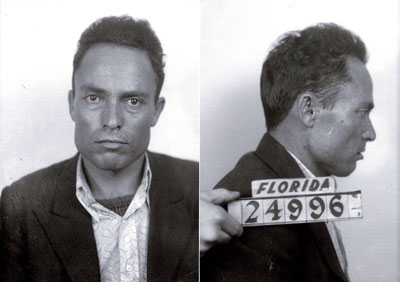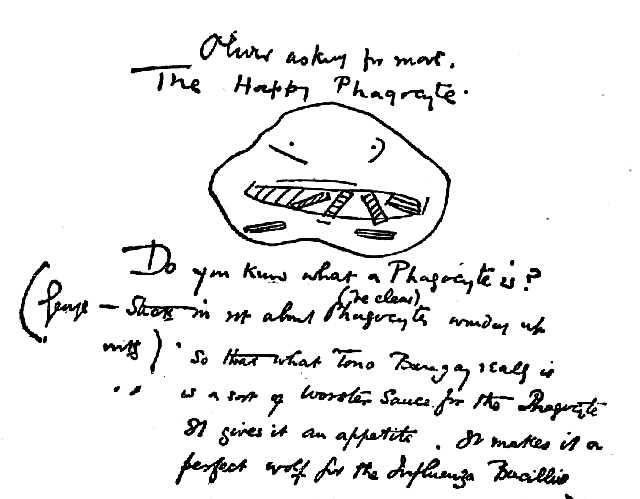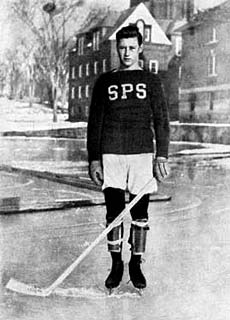|
This Side Of Paradise
''This Side of Paradise'' is the debut novel by American writer F. Scott Fitzgerald, published in 1920. It examines the lives and morality of carefree American youth at the dawn of the Jazz Age. Its protagonist, Amory Blaine, is an attractive middle-class student at Princeton University who dabbles in literature and engages in a series of romances with flappers. The novel explores the theme of love warped by greed and status-seeking, and takes its title from a line of Rupert Brooke's poem ''Tiare Tahiti''. Within months of its publication, ''This Side of Paradise'' became a cultural sensation in the United States, and reviewers hailed the work as an amazing debut novel. The book went through twelve printings and sold 49,075 copies. It became especially popular among American college students, and the American national press depicted its 23-year-old author as the standard-bearer for "youth in revolt". Overnight, F. Scott Fitzgerald became a household name. His newfound fame ena ... [...More Info...] [...Related Items...] OR: [Wikipedia] [Google] [Baidu] |
Bildungsroman
In literary criticism, a ''Bildungsroman'' (, plural ''Bildungsromane'', ) is a literary genre that focuses on the psychological and moral growth of the protagonist from childhood to adulthood ( coming of age), in which character change is important. The term comes from the German words ("education", alternatively "forming") and ("novel"). Origin The term was coined in 1819 by philologist Johann Karl Simon Morgenstern in his university lectures, and was later famously reprised by Wilhelm Dilthey, who legitimized it in 1870 and popularized it in 1905. The genre is further characterized by a number of formal, topical, and thematic features. The term ''coming-of-age novel'' is sometimes used interchangeably with ''Bildungsroman'', but its use is usually wider and less technical. The birth of the Bildungsroman is normally dated to the publication of ''Wilhelm Meister's Apprenticeship'' by Johann Wolfgang von Goethe in 1795–96, or, sometimes, to Christoph Martin Wieland's of ... [...More Info...] [...Related Items...] OR: [Wikipedia] [Google] [Baidu] |
Westbrook Pegler
Francis James Westbrook Pegler (August 2, 1894 – June 24, 1969) was an American journalist and writer. He was a popular columnist in the 1930s and 1940s famed for his opposition to the New Deal and labor unions. Pegler aimed his pen at presidents of both parties, including Herbert Hoover, FDR ("moosejaw"), Harry Truman ("a thin-lipped hater"), and John F. Kennedy. He also criticized the Supreme Court, the tax system, and corrupt labor unions. In 1962, he lost his contract with King Features Syndicate, owned by the Hearst Corporation, after he started criticizing Hearst executives. His late writing appeared sporadically in publications that included the John Birch Society's ''American Opinion''. Farr (1975) Background James Westbrook Pegler was born on August 2, 1894, in Minneapolis, Minnesota, the son of Frances A. (Nicholson) and Arthur James Pegler, a local newspaper editor. Career Journalism career Westbrook Pegler was the youngest American war correspondent during World ... [...More Info...] [...Related Items...] OR: [Wikipedia] [Google] [Baidu] |
Tono-Bungay
''Tono-Bungay'' is a realist semiautobiographical novel written by H. G. Wells and first published in book form in 1909. It has been called "arguably his most artistic book". It had been serialised before book publication, both in the United States, in ''The Popular Magazine'', beginning in the issue of September 1908, and in Britain, in ''The English Review'', beginning in the magazine's first issue in December 1908. Plot ''Tono-Bungay'' is narrated by George Ponderevo, who is persuaded to help develop the business of selling Tono-Bungay, a patent medicine created by his uncle Edward. George devotes seven years to organising the production and manufacture of the product, even though he believes it is "a damned swindle". He then quits day-to-day involvement with the enterprise in favour of aeronautics, but he remains associated with his uncle, who becomes a financier of the first order and is on the verge of achieving social as well as economic dominance when his business empi ... [...More Info...] [...Related Items...] OR: [Wikipedia] [Google] [Baidu] |
Zelda Fitzgerald
Zelda Fitzgerald (; July 24, 1900 – March 10, 1948) was an American novelist, painter, dancer, and socialite. Born in Montgomery, Alabama, she was noted for her beauty and high spirits, and was dubbed by her husband F. Scott Fitzgerald as "the first American flapper". She and Scott became emblems of the Jazz Age, for which they are still celebrated. The immediate success of Scott's first novel, ''This Side of Paradise'' (1920), brought them into contact with high society, but their marriage was plagued by wild drinking, infidelity and bitter recriminations. Ernest Hemingway, whom Zelda Fitzgerald disliked, blamed her for her husband's declining literary output. Zelda suffered from mental health crisis and was increasingly confined to specialist clinics. Contemporary diagnoses posited that she had schizophrenia, although later posthumous diagnoses posit bipolar disorder. The couple were living apart when Scott died suddenly in 1940. Zelda Fitzgerald died over seven years l ... [...More Info...] [...Related Items...] OR: [Wikipedia] [Google] [Baidu] |
Hobey Baker
Hobart Amory Hare "Hobey" Baker (January 15, 1892 – December 21, 1918) was an American amateur athlete of the early twentieth century. Considered the first American star in ice hockey by the Hockey Hall of Fame, he was also an accomplished American football player. Born into a prominent family from the Philadelphia area, he enrolled at Princeton University in 1910. Baker excelled on the university's hockey and football teams, and became a noted amateur hockey player for the St. Nicholas Hockey Club in New York City. He was a member of three national championship teams, for football in 1911 and hockey in 1912 and 1914, and helped the St. Nicholas Club win a national amateur championship in 1915. Baker graduated from Princeton in 1914 and worked for J.P. Morgan Bank until he enlisted in the United States Army Air Service. During World War I he served with the 103rd and the 13th Aero Squadrons before being promoted to captain and named commander of the 141st Aero Squadron. Bak ... [...More Info...] [...Related Items...] OR: [Wikipedia] [Google] [Baidu] |
Cleveland Tower
Cleveland Tower is a bell tower containing a carillon on the campus of Princeton University. Inspired by Boston College's Gasson Hall, the design by Ralph Adams Cram is one of the defining Collegiate Gothic architectural features of the university's Graduate College. The tower was built in 1913 as a memorial to former university trustee and U.S. President Grover Cleveland. A bust of the former president is the centerpiece of the grand chamber at the tower's ground level. Class of 1892 Bells The tower's carillon is a gift of the class of 1892, which presented the bells as their 35th reunion dedication to the university in 1927. The English foundry Gillett & Johnston cast the original 35 bells. A plaque near the tower's entrance reads: ''The Class of Eighteen Ninety Two presents the carillon in this tower to Princeton University with love and gratitude and the hope that its bells may ever inspire coming generations of Princeton men to maintain the traditions of their alma ... [...More Info...] [...Related Items...] OR: [Wikipedia] [Google] [Baidu] |
Socialism
Socialism is a left-wing economic philosophy and movement encompassing a range of economic systems characterized by the dominance of social ownership of the means of production as opposed to private ownership. As a term, it describes the economic, political and social theories and movements associated with the implementation of such systems. Social ownership can be state/public, community, collective, cooperative, or employee. While no single definition encapsulates the many types of socialism, social ownership is the one common element. Different types of socialism vary based on the role of markets and planning in resource allocation, on the structure of management in organizations, and from below or from above approaches, with some socialists favouring a party, state, or technocratic-driven approach. Socialists disagree on whether government, particularly existing government, is the correct vehicle for change. Socialist systems are divided into non-market and market f ... [...More Info...] [...Related Items...] OR: [Wikipedia] [Google] [Baidu] |
Presidency Of Woodrow Wilson
Woodrow Wilson's tenure as the 28th president of the United States lasted from 4 March 1913 until 4 March 1921. He was largely incapacitated the last year and a half. He became president after winning the 1912 election. Wilson was a Democrat who previously served as governor of New Jersey. He gained a large majority in the electoral vote and a 42% plurality of the popular vote in a four-candidate field. Wilson was re-elected in 1916 by a narrow margin. Despite his New Jersey base, most Southern leaders worked with him as a fellow Southerner. Wilson was a leading force in the Progressive Movement. During his first term, he oversaw the passage of progressive legislative policies unparalleled until the New Deal in the 1930s. Taking office one month after the ratification of the 16th Amendment of the Constitution permitted a federal income tax, he helped pass the Revenue Act of 1913, which introduced a low federal income tax to replace revenue lost in lower tariff rates. The ... [...More Info...] [...Related Items...] OR: [Wikipedia] [Google] [Baidu] |
Prohibition In The United States
In the United States from 1920 to 1933, a Constitution of the United States, nationwide constitutional law prohibition, prohibited the production, importation, transportation, and sale of alcoholic beverages. The alcohol industry was curtailed by a succession of state legislatures, and finally ended nationwide under the Eighteenth Amendment to the United States Constitution, ratified on January 16, 1919. Prohibition ended with the ratification of the Twenty-first Amendment to the United States Constitution, Twenty-first Amendment, which repealed the Eighteenth Amendment on December 5, 1933. Led by Pietism, pietistic Protestantism in the United States, Protestants, prohibitionists first attempted to end the trade in alcoholic drinks during the 19th century. They aimed to heal what they saw as an ill society beset by alcohol-related problems such as alcoholism, Domestic violence, family violence, and Saloon bar, saloon-based political corruption. Many communities introduced al ... [...More Info...] [...Related Items...] OR: [Wikipedia] [Google] [Baidu] |
Decadence
The word decadence, which at first meant simply "decline" in an abstract sense, is now most often used to refer to a perceived decay in standards, morals, dignity, religious faith, honor, discipline, or skill at governing among the members of the elite of a very large social structure, such as an empire or nation state. By extension, it may refer to a decline in art, literature, science, technology, and work ethics, or (very loosely) to self-indulgent behavior. Usage of the term sometimes implies moral censure, or an acceptance of the idea, met with throughout the world since ancient times, that such declines are objectively observable and that they inevitably precede the destruction of the society in question; for this reason, modern historians use it with caution. The word originated in Medieval Latin ''(dēcadentia)'', appeared in 16th-century French, and entered English soon afterwards. It bore the neutral meaning of decay, decrease, or decline until the late 19th cent ... [...More Info...] [...Related Items...] OR: [Wikipedia] [Google] [Baidu] |
Armistice With Germany (Compiègne)
The Armistice of 11 November 1918 was the armistice signed at Le Francport near Compiègne that ended fighting on land, sea, and air in World War I between the Entente and their last remaining opponent, Germany. Previous armistices had been agreed with Bulgaria, the Ottoman Empire and Austria-Hungary. It was concluded after the German government sent a message to American president Woodrow Wilson to negotiate terms on the basis of a recent speech of his and the earlier declared " Fourteen Points", which later became the basis of the German surrender at the Paris Peace Conference, which took place the following year. Also known as the Armistice of Compiègne (french: Armistice de Compiègne, german: Waffenstillstand von Compiègne) from the place where it was officially signed at 5:45 a.m. by the Allied Supreme Commander, French Marshal Ferdinand Foch, it came into force at 11:00 a.m. Central European Time (CET) on 11 November 1918 and marked a vi ... [...More Info...] [...Related Items...] OR: [Wikipedia] [Google] [Baidu] |
Western Front (World War I)
The Western Front was one of the main theatres of war during the First World War. Following the outbreak of war in August 1914, the German Army opened the Western Front by invading Luxembourg and Belgium, then gaining military control of important industrial regions in France. The German advance was halted with the Battle of the Marne. Following the Race to the Sea, both sides dug in along a meandering line of fortified trenches, stretching from the North Sea to the Swiss frontier with France, which changed little except during early 1917 and in 1918. Between 1915 and 1917 there were several offensives along this front. The attacks employed massive artillery bombardments and massed infantry advances. Entrenchments, machine gun emplacements, barbed wire and artillery repeatedly inflicted severe casualties during attacks and counter-attacks and no significant advances were made. Among the most costly of these offensives were the Battle of Verdun, in 1916, with a combined 700,000 ... [...More Info...] [...Related Items...] OR: [Wikipedia] [Google] [Baidu] |






.jpg)


.jpg)